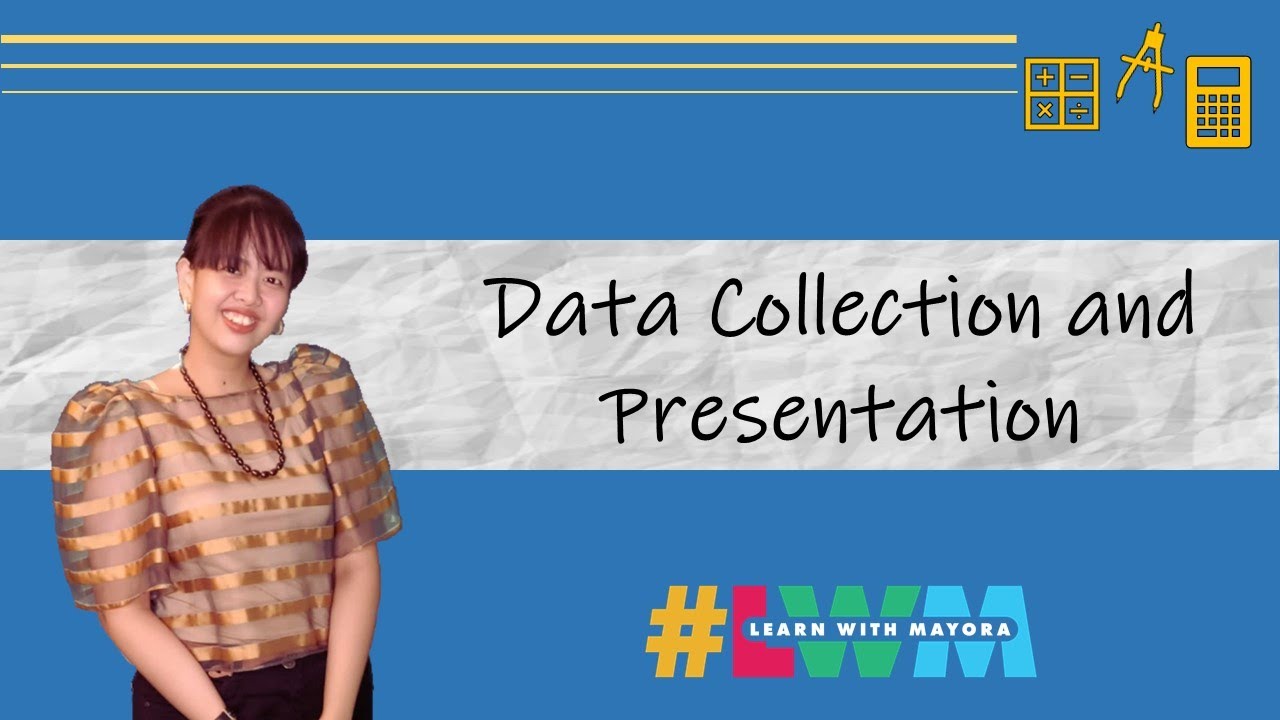QUANTITATIVE DATA COLLECTION TECHNIQUES
Summary
TLDRThis educational video introduces two primary quantitative data collection methods: surveys and experiments. Surveys are versatile, allowing data collection via face-to-face, phone, or online platforms like Google Forms or SurveyMonkey. Experiments, on the other hand, involve manipulating variables to establish cause-and-effect relationships, such as testing the impact of music on student cognitive performance. The video effectively outlines these methods, emphasizing their significance in educational research.
Takeaways
- 📊 **Quantitative Data Collection Methods**: The video discusses two primary quantitative methods used in educational research: surveys and experiments.
- 📝 **Survey Method**: Surveys are conducted using questionnaires distributed to respondents through various approaches.
- 🗓️ **Efficiency of Surveys**: Surveys enable the collection of data from a large number of people in a short time.
- 👤 **Face-to-Face Surveys**: Data can be collected by personally interacting with respondents.
- 📞 **Phone Surveys**: Data collection is done by contacting respondents via telephone or cellular phone.
- 🌐 **Online Surveys**: Surveys are sent through online channels like email, social media, or embedded on websites.
- 📊 **Survey Tools**: Tools like Google Forms and SurveyMonkey are mentioned for collecting online data.
- 🔬 **Experiments in Research**: Experiments involve manipulating variables to establish cause-and-effect relationships.
- 🎵 **Example Scenario**: An example is given where music's impact on student cognitive performance is studied.
- 📈 **Control and Experimental Groups**: In experiments, there is a need to establish both control and experimental groups for comparison.
- 📋 **Standardized Assessment**: Researchers use standardized tools to measure performance and compare groups' outcomes.
Q & A
What are the two most common quantitative data collection methods used in educational research?
-The two most common quantitative data collection methods used in educational research are surveys and experiments.
What is a survey method in educational research?
-A survey method in educational research is a way to gather data from a large number of people by using a questionnaire distributed through various approaches.
How can a survey be conducted face-to-face?
-A face-to-face survey is conducted by speaking to the respondents in person to collect data.
What is the telephone approach in conducting a survey?
-In the telephone approach, the researcher collects data by contacting the target respondents via telephone or cellular phone.
How is an online survey typically conducted?
-An online survey is conducted by sending a survey questionnaire to the target respondents through online channels such as email, social media, or embedding it on a website.
Which platforms are mentioned in the script for collecting data online?
-The script mentions using Google Forms or the website SurveyMonkey to collect data online.
What is the purpose of conducting experiments in educational research?
-Experiments in educational research are conducted to manipulate and control certain variables to establish cause and effect relationships.
How does a researcher establish cause and effect relationships through experiments?
-A researcher establishes cause and effect relationships by manipulating variables and observing their impact on the outcome.
What are the two groups a researcher must establish in an experiment?
-A researcher must establish a control group and an experimental group in an experiment.
How are students typically assigned to groups in an experimental study?
-Students are randomly assigned to either the control group or the experimental group in an experimental study.
What tool might a researcher use to measure performance in an experiment?
-A researcher might use a standardized assessment tool to measure the performance of both the control group and the experimental group.
What is the difference between a true experiment and a quasi-experiment in educational research?
-A true experiment involves random assignment of participants to treatment conditions, while a quasi-experiment does not.
Outlines

Dieser Bereich ist nur für Premium-Benutzer verfügbar. Bitte führen Sie ein Upgrade durch, um auf diesen Abschnitt zuzugreifen.
Upgrade durchführenMindmap

Dieser Bereich ist nur für Premium-Benutzer verfügbar. Bitte führen Sie ein Upgrade durch, um auf diesen Abschnitt zuzugreifen.
Upgrade durchführenKeywords

Dieser Bereich ist nur für Premium-Benutzer verfügbar. Bitte führen Sie ein Upgrade durch, um auf diesen Abschnitt zuzugreifen.
Upgrade durchführenHighlights

Dieser Bereich ist nur für Premium-Benutzer verfügbar. Bitte führen Sie ein Upgrade durch, um auf diesen Abschnitt zuzugreifen.
Upgrade durchführenTranscripts

Dieser Bereich ist nur für Premium-Benutzer verfügbar. Bitte führen Sie ein Upgrade durch, um auf diesen Abschnitt zuzugreifen.
Upgrade durchführen5.0 / 5 (0 votes)






